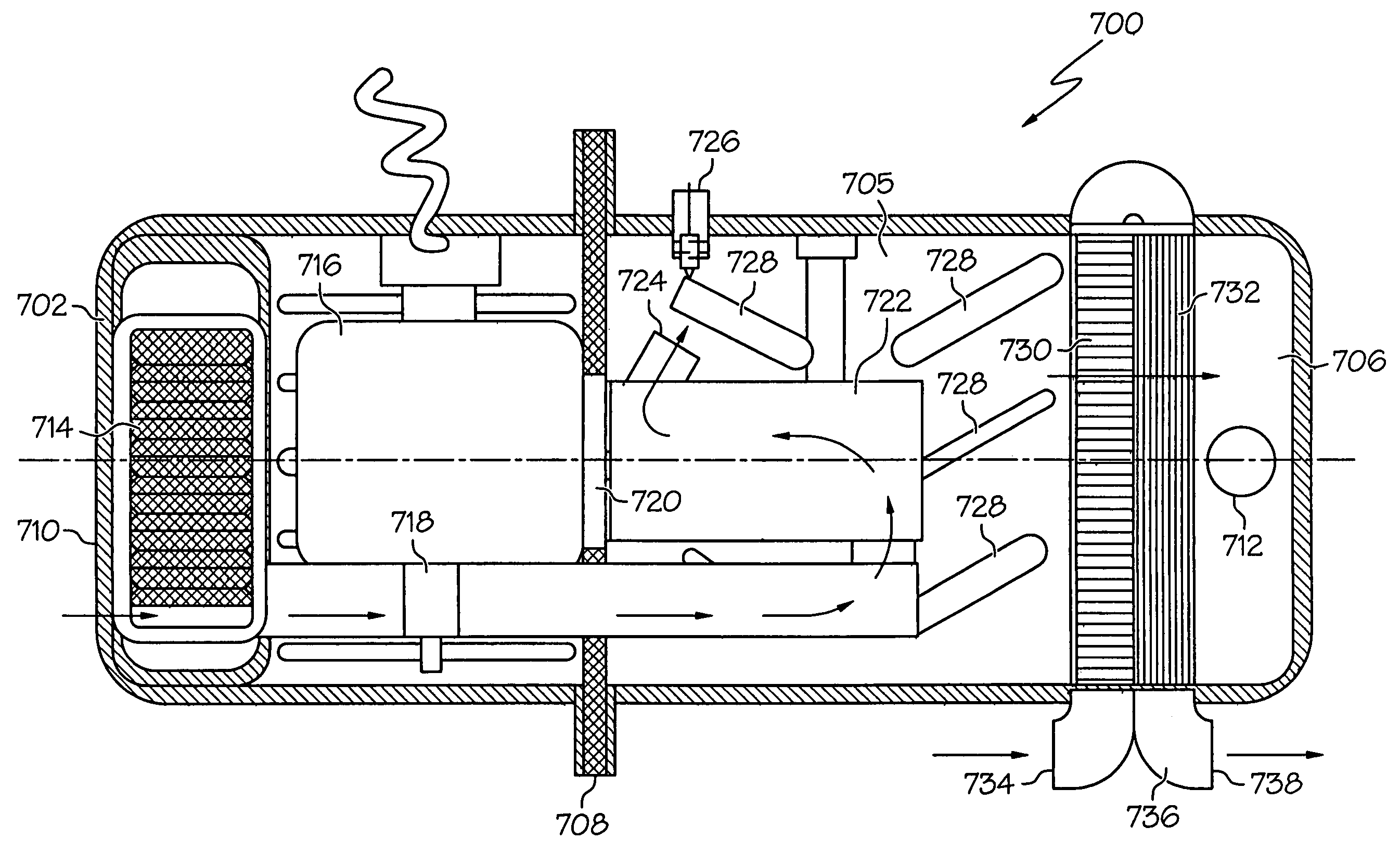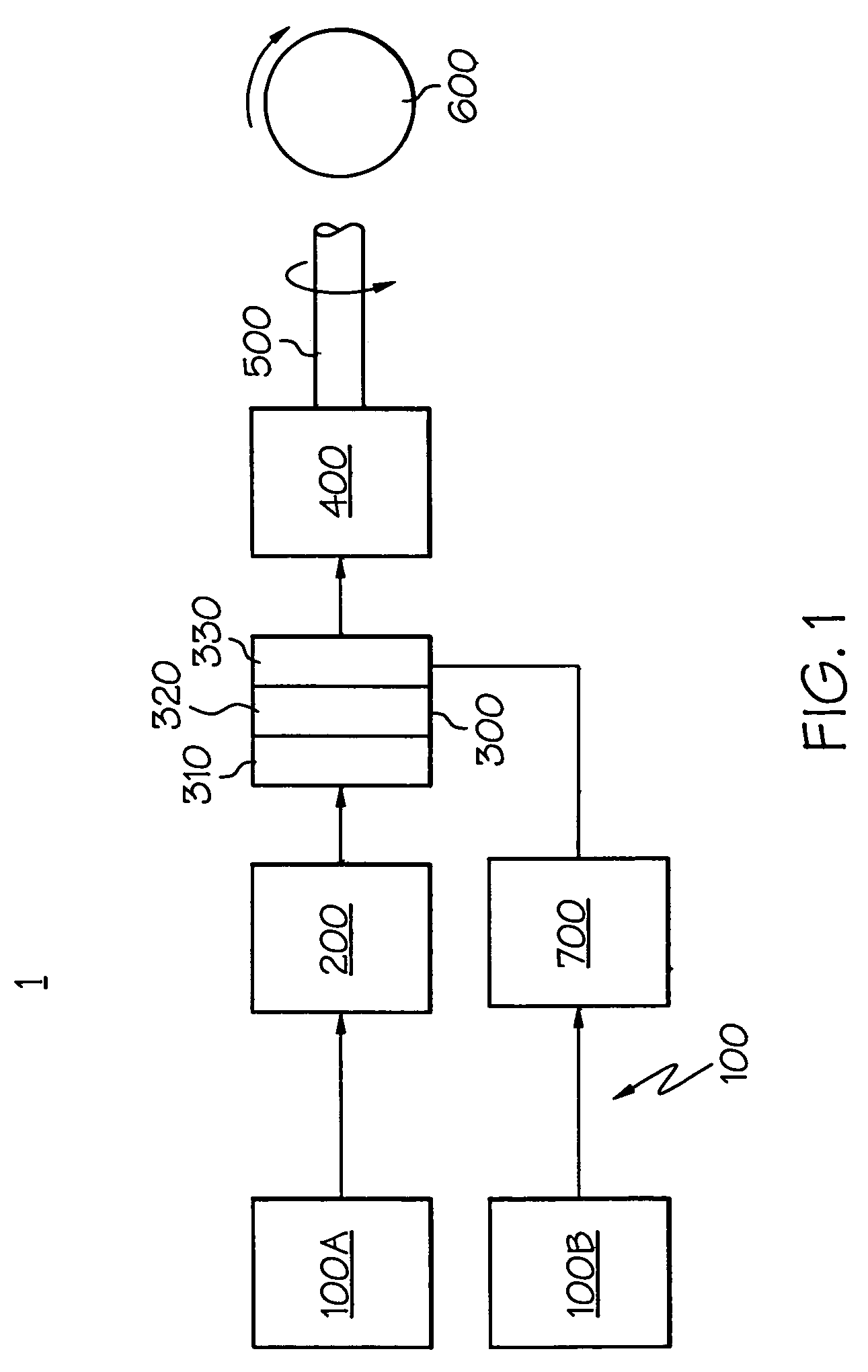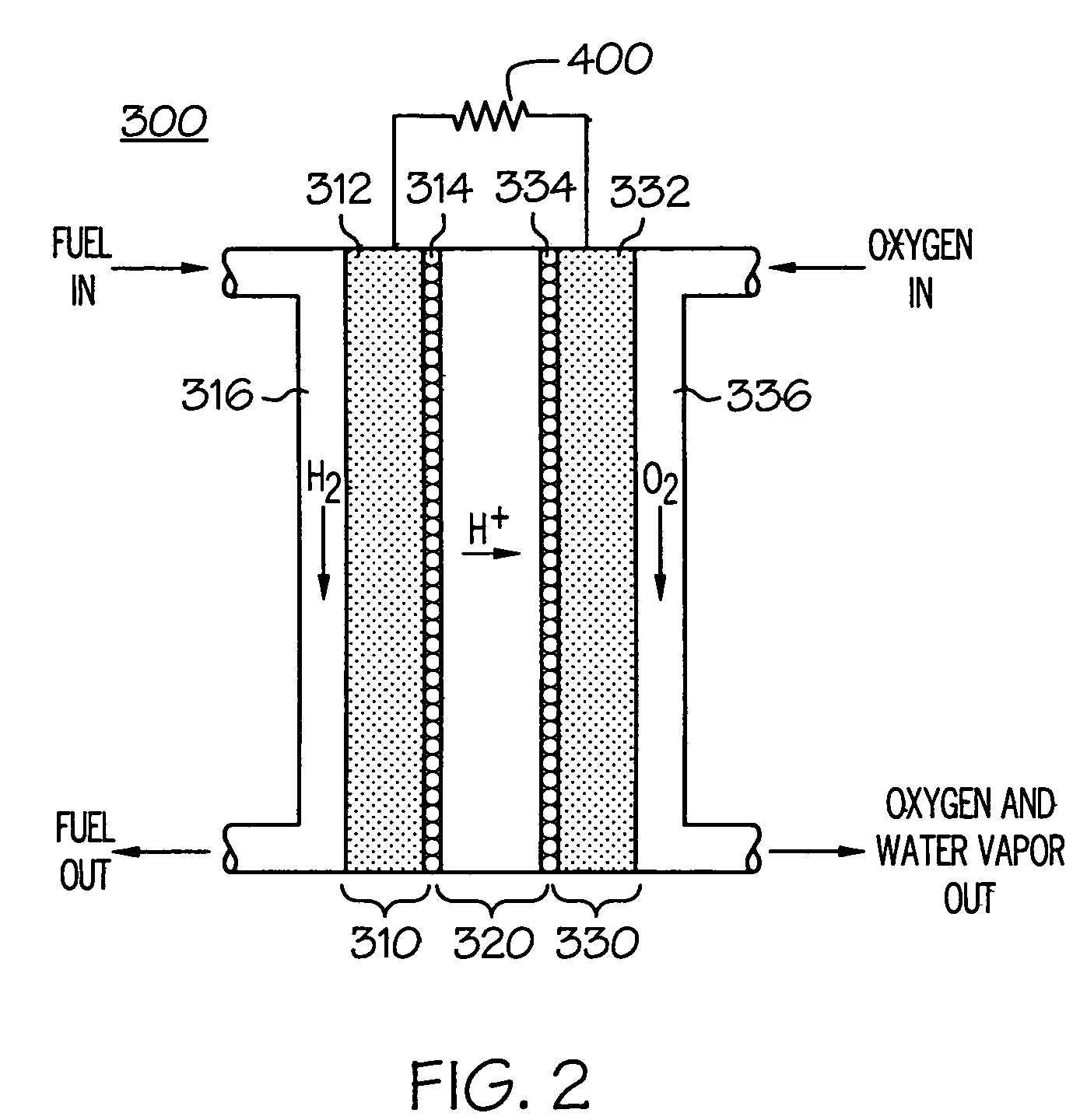Integrated air supply with humidification control for fuel cell power systems
a fuel cell power system and air supply technology, applied in the field of manipulating airflow, can solve the problems of reducing the hydration level of the membrane, limiting the electrical conductivity of the membrane, and no guarantee of local water balance, so as to reduce the number of components, reduce the complexity of the concomitant device, and reduce the loss of individual or similar dedicated conduits
- Summary
- Abstract
- Description
- Claims
- Application Information
AI Technical Summary
Benefits of technology
Problems solved by technology
Method used
Image
Examples
Embodiment Construction
[0024]Referring initially to FIGS. 1 and 4, a block diagram highlights the major components of a mobile fuel cell system 1 according to the present invention, as well as a representative placement of a fuel cell system into an automotive application. Referring with particularity to FIG. 1, the system 1 includes a fuel delivery system 100 (made up of fuel source 100A and oxygen source 100B), fuel processing system 200, fuel cell 300, one or more energy storage devices 400, a drivetrain 500 and one or more motive devices 600, shown notionally as a wheel. While the present system 1 is shown for mobile (such as vehicular) applications, it will be appreciated by those skilled in the art that the use of the fuel cell 300 and its ancillary equipment is equally applicable to stationary applications. It will also be appreciated by those skilled in the art that other fuel delivery and fuel processing systems are available. For example, there could be, in addition to a fuel source 100A and oxy...
PUM
| Property | Measurement | Unit |
|---|---|---|
| temperature | aaaaa | aaaaa |
| temperature | aaaaa | aaaaa |
| temperature | aaaaa | aaaaa |
Abstract
Description
Claims
Application Information
 Login to View More
Login to View More - R&D
- Intellectual Property
- Life Sciences
- Materials
- Tech Scout
- Unparalleled Data Quality
- Higher Quality Content
- 60% Fewer Hallucinations
Browse by: Latest US Patents, China's latest patents, Technical Efficacy Thesaurus, Application Domain, Technology Topic, Popular Technical Reports.
© 2025 PatSnap. All rights reserved.Legal|Privacy policy|Modern Slavery Act Transparency Statement|Sitemap|About US| Contact US: help@patsnap.com



